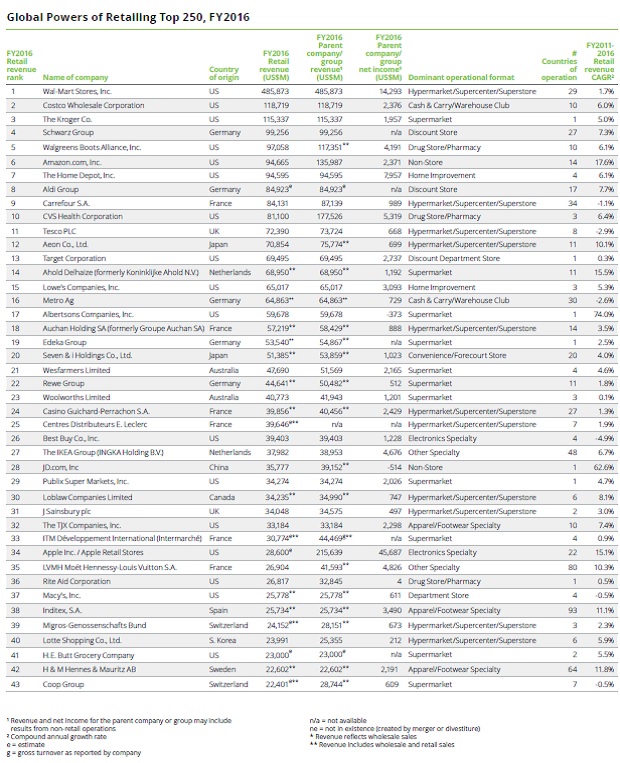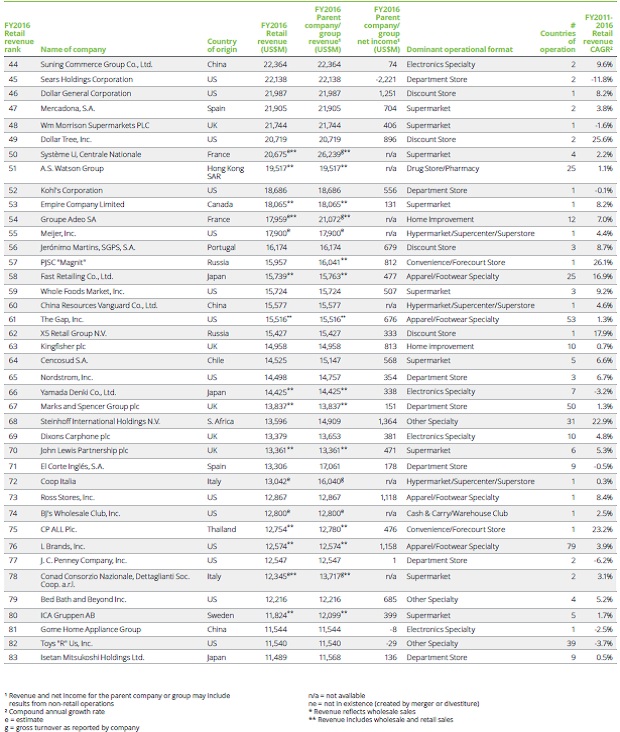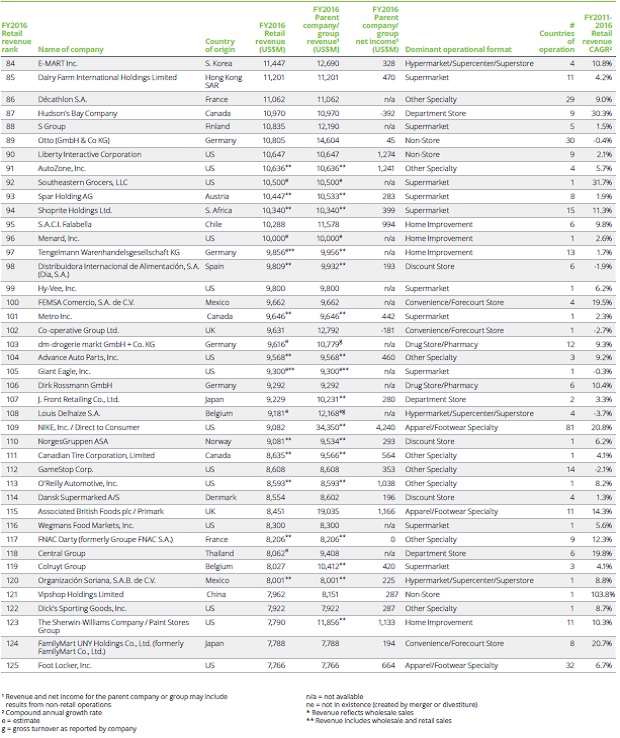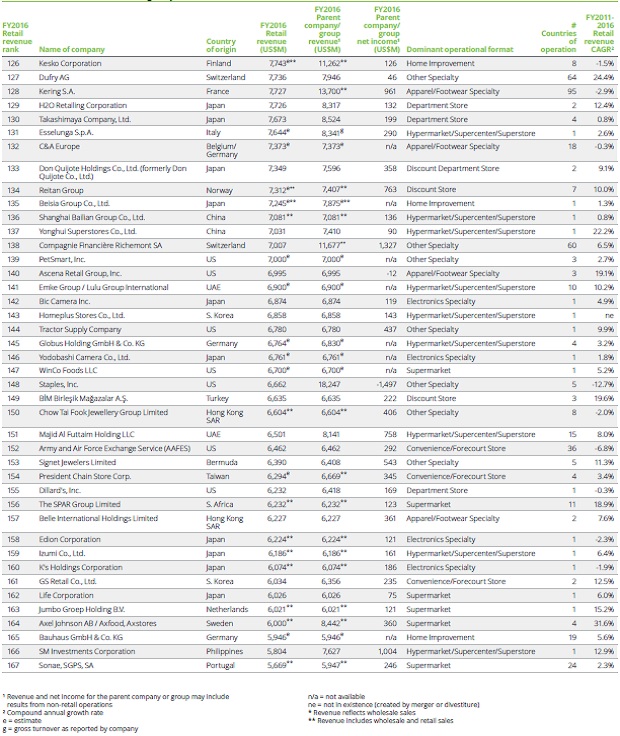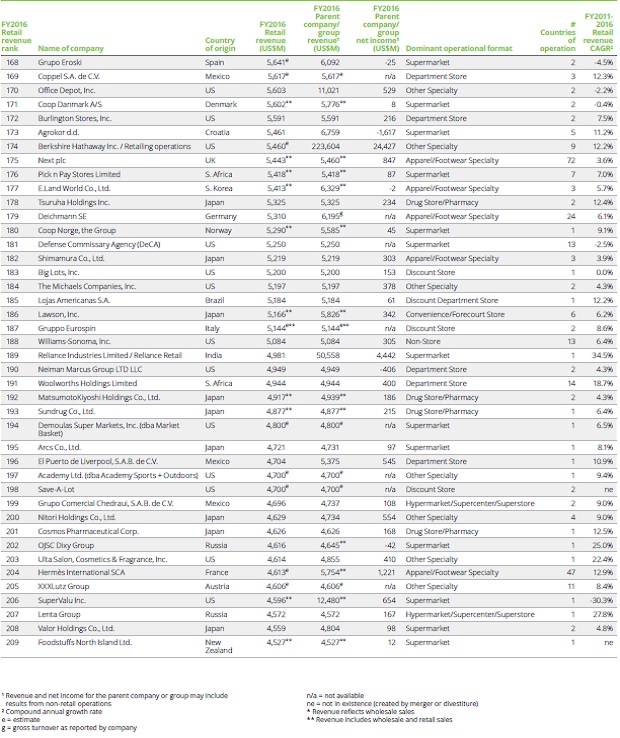TOP 250 Retailers of the World 2018

Deloitte published TOP 250 retailers 2018 reports. Deloitte is the brand under which tens of thousands of dedicated professionals in independent firms throughout the world collaborate to provide audit & assurance, consulting, risk and financial advisory, risk management, tax, and related services to select clients.
You can see summarised of the report below;
Global Powers of Retailing identifies the 250 largest retailers around the world based on publicly available data for FY2016 (fiscal years ended through June 2017), and analyzes their performance across geographies and product sectors.
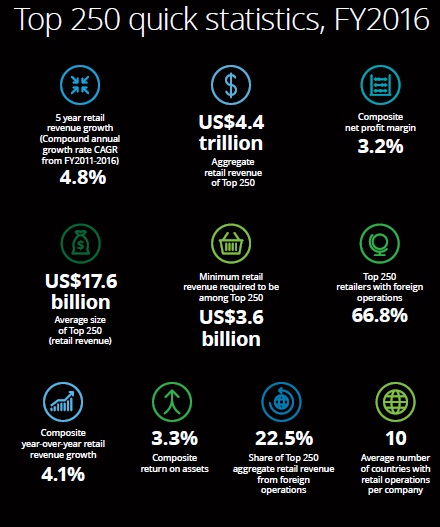
This year’s report will focus on the theme of “Transformative change, reinvigorated commerce”, which looks at the latest retail trends and the future of retailing through the lens of young consumers. To mark this 21st edition, there will be a retrospective which looks at how the Top 250 has changed over the last 15 years.

Retail trends: Transformative change, reinvigorated commerce
It is a transformative time in retail. The shopper is clearly in the driver’s seat, enabled by technology to remain constantly connected and more empowered than ever before to drive changes in shopping behavior. “Everywhere commerce” has taken root, allowing consumers to shop however, wherever, and whenever they want—whether in stores, online, by mobile, voice activation or click-and-collect.

Stores are closing as retail spending moves online at a meteoric pace, gets overturned by spending on services, and some retailers generally lose favor with consumers. In fact, the US saw a record number of store closings in 2017, with 6,885 stores already having shut their doors by 1 December. Among those rationalizing their store bases are Macy’s, J.C.Penney, Sears/Kmart and a host of mall-based apparel specialists. Stores across the globe face a similar fate as retailers close unprofitable stores to instead focus on their most productive and promising locations.
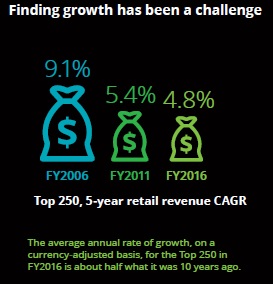
CAGR:Compound Annual Growth Rate
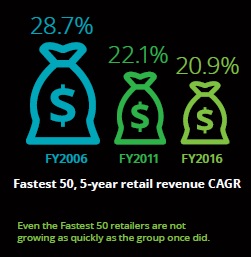
Building world-class digital capabilities
Retailers across the globe are rapidly adapting to the fact that, from the consumer perspective, shopping is not about bricks versus clicks or one channel versus another. Instead, consumers are channel-agnostic. The shopping journey and pre-shopping research is a fluid process with consumers bouncing between online and offline along the path to purchase. Just how much digital influences consumer spending is a real eyeopener.
Combining bricks and clicks makes up for lost time
The rest of the retailing world is not about to sit idly by and watch Amazon shoot up the retail ranks and steal market share. Many players that may have initially been on the sidelines, failing to keep up with digital trends, are now making up for lost time in a big way. A recent study finds that global grocery sales through e-commerce channels jumped 30 percent in the past year.Countries leading the growth charge were China (+52%), South Korea (+41%), the UK (+8%), France (+7%), and Japan and the US (both +5%). China is the world’s dominant e-commerce—and mobile—market.Two of the top three fastest-growing retailers in 2016 are China-based e-commerce retailers Vipshop and JD.com.
Creating unique and compelling in-store experiences
Physical retail stores are not going away; 90 percent of worldwide retail sales are still done in physical stores. But to compete with the convenience and endless aisle assortment offered online, meaningful customer experiences and brand engagement is crucial. Apple Stores and Nike Retail are held as the gold standard in this regard. Other bricks-and-mortar retailers are realizing the importance of creating unique and curated merchandise offers, an exciting and entertaining atmosphere, and concierge-like service levels beyond what consumers can find online. What is starting to happen inside grocery stores across the globe is a good example.
Reinventing retail with the latest technologies
Few times in history have rapid advancements in technology and breakthrough innovations had the ability to disrupt retail business models in such fast and allencompassing ways. If not already, the Internet of Things, artificial intelligence, augmented and virtual reality (AR/VR), and robots should be on every retailer’s radar. Voice-controlled electronic devices powered by artificial intelligence technology, like Amazon Echo, Echo Dot, and Google Home, are disrupting the path to purchase.Amazon’s Echo and Dot, for example, have built-in capabilities that sync with Amazon.com for shopping purposes. With a simple voice command, shoppers order items for direct delivery through Alexa, the “voice” behind Amazon’s AI technology, without going online or stepping foot in a store. Not too surprisingly, Amazon holds 68 percent of smart speaker market share.Alexa moved into Canada in November 2017. Australia can likely expect the same when Amazon enters the region in 2018.
Region Profiles and Globalization levels
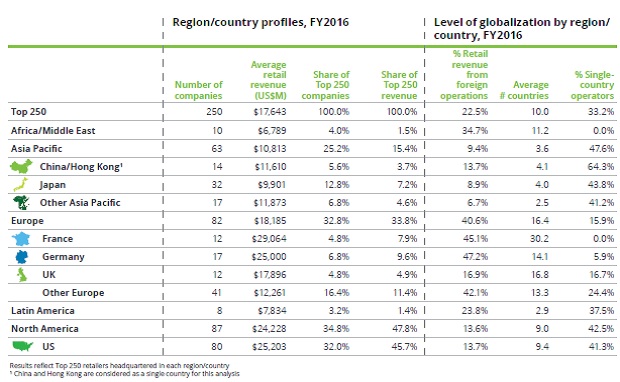
Revenue and Profitability
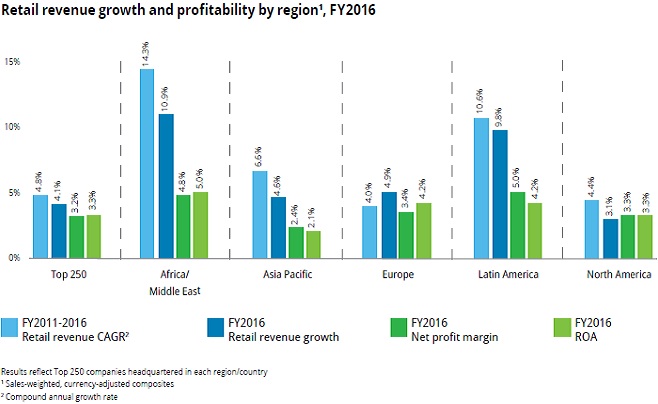
List of TOP 250 Retailers are below;
